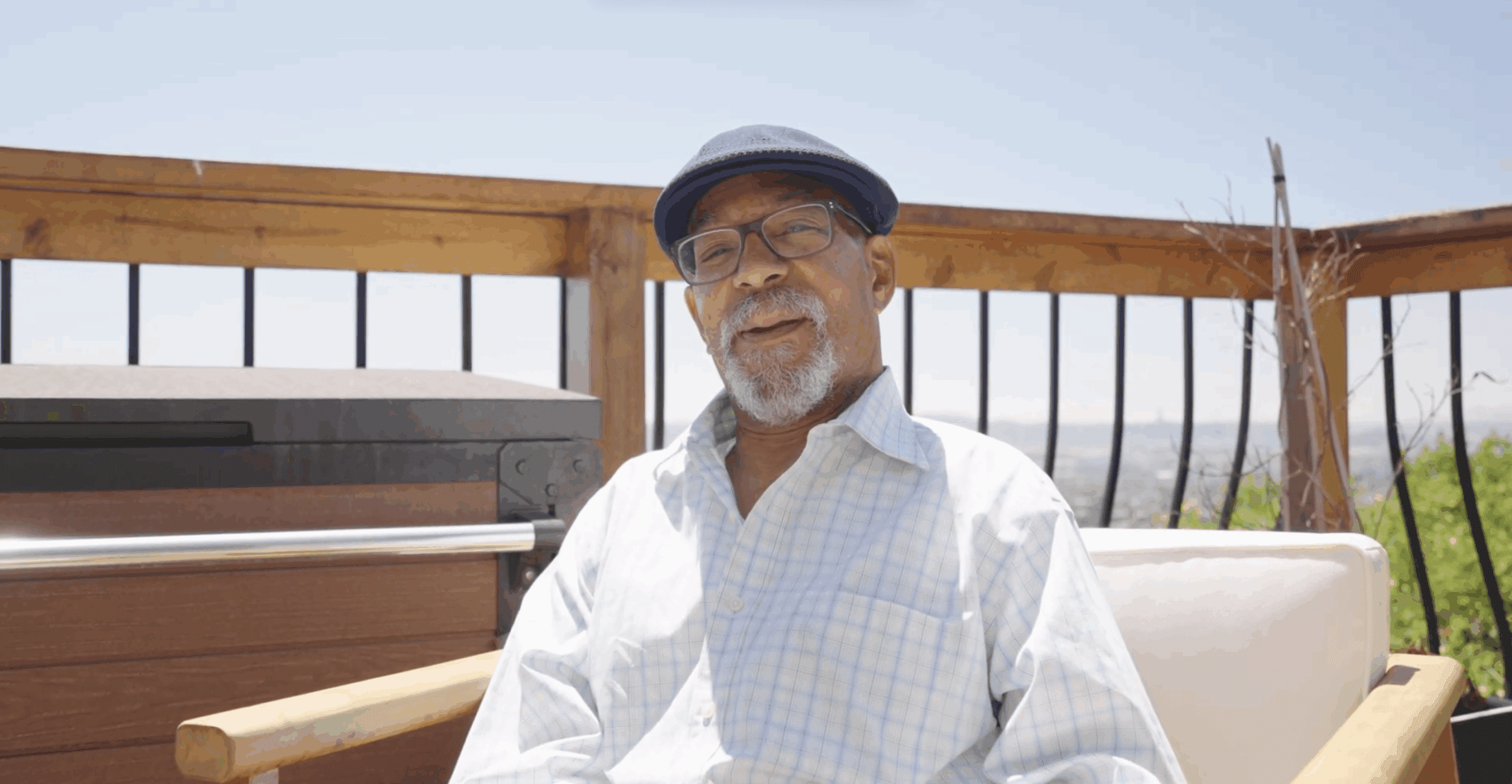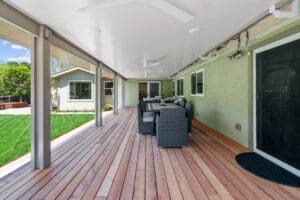Let’s Talk About Adding On (Without Losing Your Mind)
So, you love your Bay Area neighborhood. The vibe is perfect, the location is unbeatable, and the schools are great. But your family? Well, they’ve somehow managed to outgrow the square footage. Sound familiar? We hear this story every single day.
Moving means jumping back into the insane housing market, and let’s be honest, the thought of a bidding war is enough to make anyone consider just pitching a tent in the backyard. But what if the solution isn’t about finding a new house, but about creating the house you already have? We’re talking about a home addition.
Now, before you get visions of sledgehammers and dust for the next decade, take a breath. We’re going to walk through this together. We’ll chat about the three big things everyone in the Bay Area wrestles with: squeezing every ounce of value out of your new space, managing the budget without crying, and—dun dun dun—navigating the wonderful world of permits.
It’s a journey, but a worthwhile one. And as a local home renovation contractor based right here in Contra Costa County, it’s a journey we at EA Home Builders love guiding our neighbors through.
The “Why” Behind Building Up (Or Out)
We get it. The idea of a major construction project can feel daunting. But when you break it down, the reasons for choosing an addition are pretty compelling, especially here.
First, you get to stay put. You keep your low property tax base (a very big deal in California), your fantastic neighbors, and that killer Japanese maple you finally got to thrive. Second, you’re building exactly what you need. No more compromising on a floor plan that almost works. This is your chance for a truly custom remodel.
Think about it. Are you dreaming of a real master suite instead of squeezing past the laundry hamper to get to the bathroom? Maybe you need a dedicated home office because the “dining room table desk” is no longer cutting it. Or perhaps your family has simply maxed out the available bathrooms. A well-executed addition solves these very real problems.
It’s not just about adding square footage; it’s about adding functionality and joy to your daily life. And let’s be real, in the Bay Area’s competitive market, a thoughtful addition is often a smarter financial move than buying a new, larger home. You’re investing in your biggest asset.
The Holy Trinity: Space, Budget, and The Permits
Alright, let’s roll up our sleeves and dive into the three pillars of any successful home addition project. We like to think of this as the core of our planning process at EA Home Builders.
Maximizing Your New Square Footage
You’re not just adding space; you’re adding a new chapter to your home’s story. The goal is to make it feel like it was always meant to be there, not like a clumsy afterthought. So, what are you going to put in that beautiful new box?
Popular Addition Ideas We’re Seeing Everywhere
The requests we get are as diverse as the Bay Area itself, but a few patterns always emerge.
- The Grand Kitchen & Family Room Combo: This is the undisputed champion. Families want to cook, chat, help with homework, and entertain all in one flowing space. A kitchen remodeling project that opens into a new family room addition is a game-changer for how you live.
- The Primary Suite Escape: Tired of sharing a bathroom with the entire household? A new primary suite addition is the ultimate upgrade. It’s your private retreat, and frankly, it’s a sanity-saver.
- The “Flex” Room: This is the chameleon of additions. It starts as a home office, becomes a guest room, and maybe one day turns into a playroom. Building in flexibility is just smart planning.
- The Second-Story Addition: When your lot is small but your needs are big, the only way to go is up. This is a bigger undertaking, but it literally doubles your potential. It often goes hand-in-hand with a whole house remodeling project to tie everything together seamlessly.
The key is to think about how you live now, and how you want to live in five years. Do you need an expert home improvement that focuses on flow, or are you aiming for specific luxury home renovations? Your answer will shape everything.
The Budget Talk (Let’s Be Real)
Okay, let’s talk about the “cost.” It’s the elephant in the room, and we’re not going to ignore it. Home additions are a significant investment. But knowing where your money goes is half the battle.
Where Does the Money Actually Go?
A lot more than just lumber and drywall, that’s for sure. Here’s a rough breakdown of where your investment is allocated:
- Design & Engineering (10-15%): You need a solid plan. This includes architectural drawings, structural engineering, and all the paperwork that makes your project legal.
- Materials (35-40%): This is everything you touch and see—lumber, windows, flooring, cabinets, countertops, and fixtures. The quality here has a huge impact on both the price and the final feel.
- Labor (30-35%): You’re paying for skilled craftspeople—framers, electricians, plumbers, etc. This isn’t the place to cut corners.
- Permits & Fees (5-10%): Yep, you have to pay for the privilege of getting permission. These fees vary wildly from one city to another (we’ll get to that).
- Contingency (10-15%): This is non-negotiable. It’s your financial cushion for the “unknowns” that always, always pop up in a renovation. Trust us on this one.
FYI, the most common question we get is, “What’s the ballpark cost?” It’s a fair question. To give you a clearer picture, here’s a table breaking down some typical project types and their general investment ranges in the Bay Area. Keep in mind, these are estimates and can vary based on scope, materials, and site conditions.
| Project Type | General Investment Range | Key Considerations |
|---|---|---|
| Single-Room Addition (e.g., Bathroom, Office) | $75,000 – $150,000+ | Tying into existing plumbing/septic lines can add complexity. A bathroom renovation contractor will focus on efficient use of space. |
| Bump-Out Addition (e.g., Kitchen Nook) | $50,000 – $100,000+ | A smaller footprint project that can feel huge. Less foundation work, but still requires proper engineering. |
| Full Primary Suite Addition | $150,000 – $300,000+ | Includes bedroom, bathroom, and often a walk-in closet. One of the highest-value additions you can make. |
| Second-Story Addition | $250,000 – $500,000+ | Requires major engineering, often temporary relocation, and is a complex whole house remodeling project. |
| Garage Conversion | $50,000 – $125,000+ | Great for adding space without new foundation work, but you lose storage. Often requires a new foundation for car storage. |
The best way to get a real handle on your project’s cost is to get a detailed quote from a reputable general contractor. IMO, transparency from the start is what separates a good experience from a nightmare.
Taming the Permit Beast (Our “Favorite” Part)
Ah, permits. The source of so much anxiety and confusion. Why does it take so long? Why is it so complicated? Is it really necessary? (Spoiler alert: yes, it is.)
Why We Can’t Just “Skip the Paperwork”
Look, we’d love to just start building. It’s what we do best. But pulling permits isn’t just bureaucratic red tape; it’s a crucial safety check. The process ensures that your new addition is structurally sound, electrically safe, and up to current building codes. This protects you, your family, and your investment.
Trying to sidestep permits is a massive risk. It can lead to massive fines, forced demolition of your beautiful new space, and a huge headache when you try to sell your house later. It’s just not worth it.
The Bay Area Permit Patchwork
Here’s the fun part: every city has its own rules, its own pace, and its own… personality. The permit process in Walnut Creek is different from Danville, which is a world away from Oakland.
- Some cities are relatively streamlined.
- Others have more layers of review, especially for design or environmental impact.
- The timeline can range from a few weeks to many, many months.
This is where working with a local remodeling company that knows the lay of the land is priceless. We’ve built relationships with the planning departments in Contra Costa County and beyond. We know what they’re looking for, how to submit a complete application, and how to navigate the inevitable questions that come back. It saves you time, money, and a whole lot of stress.
Finding the Right Crew for the Job
You wouldn’t trust just anyone to perform surgery on you, right? The same goes for performing surgery on your house. Your choice of a home addition contractor is the single most important decision you’ll make.
So, how do you find the nearest expert? A quick search for “home addition contractor near me” will give you a long list, but how do you choose?
- Dig into those reviews: Don’t just look at the star rating. Read the content. What do past clients say about the communication, the problem-solving, and the cleanup?
- Verify their license and insurance: This is non-negotiable. Any legitimate general contractor in California will have a CSLB license. Ask for it and verify it online.
- Look at their portfolio: Do they have experience with the type of project you’re planning? If you need a basement remodel contractor, make sure they’ve actually done basements before!
- Get at least three detailed bids: This isn’t just about finding the lowest price. It’s about understanding the scope and ensuring you’re comparing apples to apples.
We know you’re looking for the closest and most trustworthy team. At EA Home Builders, we’re proud of the reputation we’ve built right here in our community. Our reviews speak to our focus on clear communication and quality craftsmanship, whether it’s a complex whole house remodeling or a precise bathroom remodeling project.
Your Top Home Addition Questions, Answered
We hear these all the time. Let’s clear a few things up.
1. How long does a typical home addition project take?
This is the “how long is a piece of string?” question, but we’ll give it a shot. A modest single-room addition might take 3-4 months from design to completion. A more complex second-story addition or a major whole house remodeling can take 6-9 months or more. Remember, a good chunk of that time is often spent in the design and permit phase, not just the physical construction.
2. Can we live in the house during the construction?
In most cases, yes, but you have to be prepared for a serious disruption. There will be dust, noise, and periods without power or water. For everyone’s safety and sanity during a major project like a second-story addition, we sometimes recommend a temporary relocation. It’s a conversation we have openly with every client.
3. What’s the difference between a general contractor and a specialized contractor?
A general contractor (like us) manages the entire project. We hire and coordinate the specialized subcontractors (like electricians, plumbers, and basement contractors), pull permits, and act as your single point of contact. Hiring individual specialized contractors yourself means you become the general contractor, which is a massive job in itself.
Your Next Step Is Easier Than You Think
So, there you have it. Adding on to your Bay Area home is a balancing act, but it’s one that can completely transform your life in this place we all love. It’s about smart space planning, realistic budgeting, and having a guide through the permit maze.
The best first step is always a conversation. If you’re in Walnut Creek, Danville, Oakland, or anywhere nearby in the bay area, we invite you to reach out to us at EA Home Builders. Let’s have a coffee, look at your space, and talk about what’s possible. We’ll give you the straight story, help you weigh the options, and create a plan that makes sense for your home and your budget.
After all, why just dream about the perfect home when you can actually build it? 🙂






